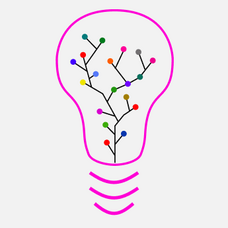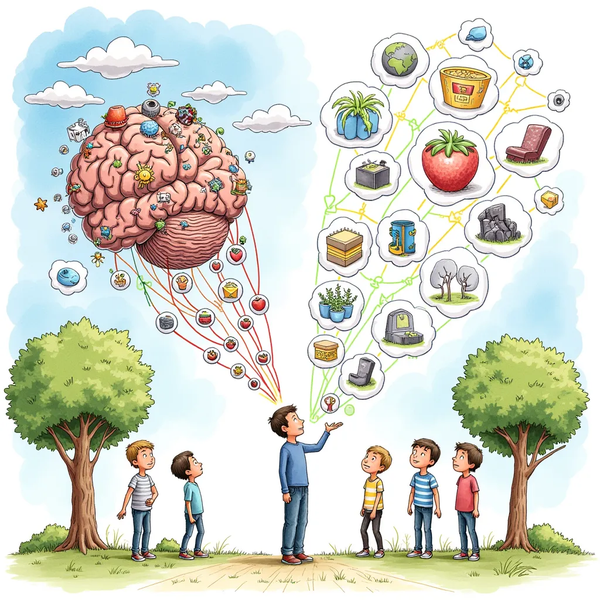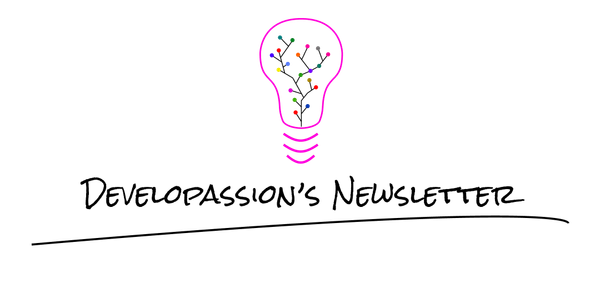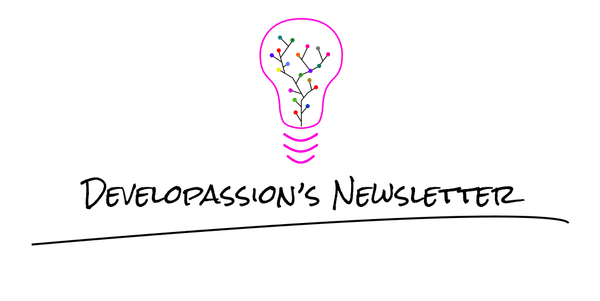How to connect ideas together
As you learn and grow, you'll accumulate more and more knowledge. While each piece is important, the relationships between ideas is, at least, as important as the ideas themselves.

As you learn and grow, you'll accumulate more and more knowledge. While each piece is important, the relationships between ideas is, at least, as important as the ideas themselves.
In this post, I want to discuss various ways in which you can connect ideas together.
Introduction
Knowledge does not exist in isolation. It exists at the interconnection between ideas. Recognizing this fact is the first step toward better learning and understanding.
From there, it is obvious that building a knowledge base where each idea lives alone in its corner doesn't make much sense. Such a knowledge base is dry and provides little value. But what do good knowledge bases look like? Let's find out!
What solid knowledge bases have in common
A solid knowledge base is one where information is easy to Locate and to Identify (i.e., the L and I of the LIFT Principle). But that's just the tip of the iceberg...

Beyond organization and good naming, another fundamental element that differentiates good and great knowledge bases is the presence of links and backlinks between the different pieces. Links transform dry knowledge bases into valuable Knowledge Graphs (KGs). It's true for personal knowledge, but also for teams and organizations. Why? For different reasons...
In addition, solid knowledge bases have a categorization system that goes beyond containers (e.g., folders) and files/notes. Surfacing knowledge is key in a knowledge base. When you categorize the information it contains, you enable others (and your future self) to explore the content in different ways. This helps in many ways. For instance, it helps to discover topics and concepts that you may not have stumbled upon otherwise. Categorization is always imperfect (and unstable!), but it is still valuable. In a similar vein, Maps of Content (e.g., indexes) provide yet additional means to explore the content.

Links and backlinks enable navigating between ideas and concepts. Links and backlinks can directly link ideas together, but they can also do so indirectly (i.e., through other pieces). Direct links make connections obvious, but indirect links can also be very useful, as they can not only connect loosely coupled ideas together, but also provide additional information and/or context. This helps to build up knowledge about a specific domain and/or related ones. When you dive into a solid knowledge graph, you basically dive into a different mind, hopefully containing more information than yours has. In my previous team, I wrote more than 800 pages of documentation about various systems, their usefulness, usage, configuration, dependencies, links and underlying concepts. There was compounding value in creating that knowledge graph. It helped newcomers and experts alike, and still proves very valuable today.
Categories (e.g., tags), Maps of Content, Links and Backlinks all increase the "explorability" of the content. It's not only about increasing the connectedness of the graph through different layers of connections, but also about enabling serendipity, the "luck" factor, while exploring the ideas.
The ability to search for specific content in a knowledge base is also very useful, as it enables quickly finding what you're looking for. As a side benefit, related search results can also uncover useful and interesting content that you might not have stumbled upon otherwise.
Last but not least, the novel ability to discuss with a knowledge base (e.g., thanks to Large Language Models) brings even more power to knowledge base users. For instance, using the Smart Connections plugin for Obsidian, I am now able to discuss with all my notes, which helps me dive even deeper into the wealth of knowledge I have accumulated over the years. By the way, the same plugin also finds potential connections between notes (hence its name!) by looking at their similarity (I share an example later in this article).
Overview of the different ways to connect ideas
In the previous section, I've described different elements that transform knowledge bases into valuable knowledge graphs. Let's visualize these elements:

In the diagram above, there are two main ideas represented by notes in a Knowledge Base: A and B. A has a direct link to B (e.g., a Markdown link from A to B). That link makes it easy to navigate from A to B. Assuming that the system has support for backlinks, the link from A to B inherently creates a backlink that you can use to navigate from B to A.
In addition to the direct link, A and B are also connected by a third note, which might provide additional information (or context) about the link between A and B. That note is also part of the whole system.
There is also a Map of Content (MoC) that provides links to various notes that are somewhat related. In this example, it points to both A and B.
Both A and B also include the same Tag T, which provides yet another way to find those elements of the graph.
Moreover, all the notes are part of the same "organization system". They're all stored together in some form. Thanks to this, those notes can all be found by using the search capability of the system, which can usually find elements by their name or title, their contents, their location, their tags, etc.
Last but not least, modern systems also enable "discussing with" the contents of the Knowledge Graph. This adds yet another dimension to leverage the knowledge you've accumulated.
Each link, backlink, tag and MoC in your Knowledge Graph creates and/or strengthens a layer of interconnected notes. Each of those increases the value of the overall graph.
And there's more. For instance, using tools such as Obsidian, you can create powerful visualizations, which provide yet another avenue to connect ideas. For instance, all the notes in the following canvas could point to different notes and help understand the links between their ideas:

Knowledge Graph Example
Let's turn the diagram of the previous section into a concrete example. I'm creating this with Obsidian, as it is my favorite Personal Knowledge Management tool.
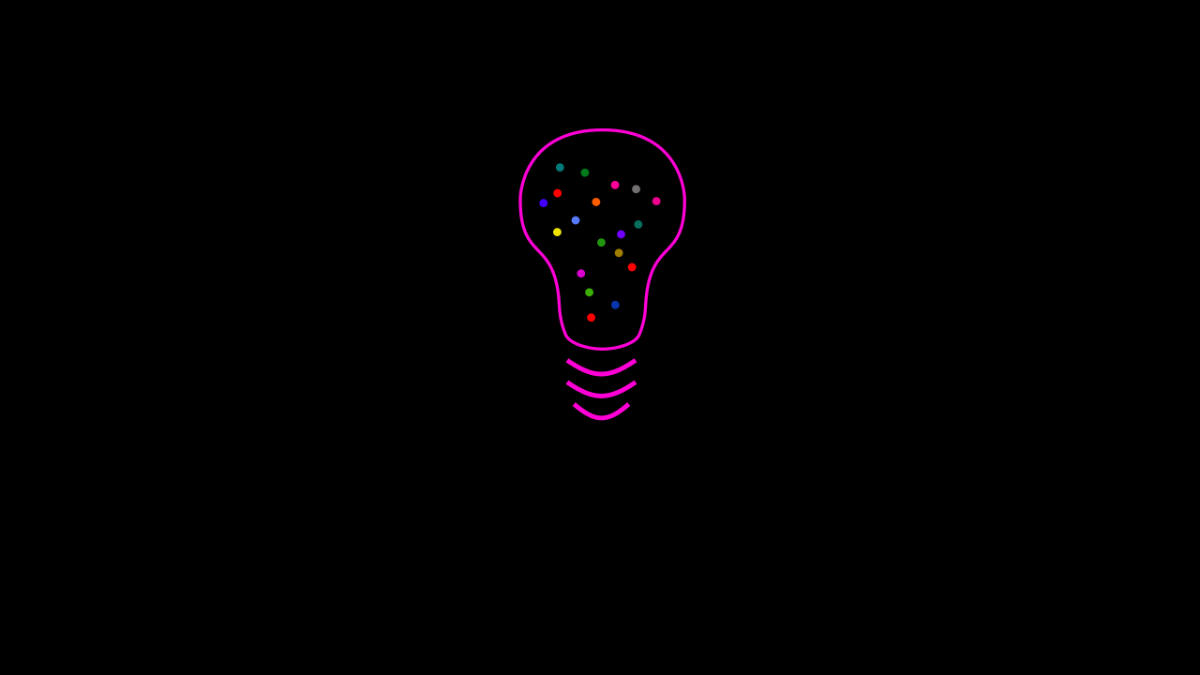
Here's Idea A, stored in a file called "Idea A.md" within some folder:
---
tags:
- t
---
# Idea A
I point to [[Idea B]]
As you can see, the note has the tag and contains a link to Idea B.
Here's Idea B, stored in a file called "Idea B.md" within the same or a different folder:
---
tags:
- t
---
# Idea B
I am idea B
Idea B has the same tag, thus both can be found by searching for that tag, but Idea B does not have a forward link to Idea A. Instead, it has a backlink, which can be uncovered by using a knowledge management tool such as Obsidian:

In my case, a daily note also links to idea B. It's an idea that I have explored in another article:

Thanks to this, I can navigate from Idea B to Idea A easily. If another note mentions "Idea B" without linking to it, it would also appear beneath the "Unlinked mentions" section, which is also valuable.
The note about A and B is stored in a file called Note about A and B.md:
---
tags:
- ...
---
# Note about A and B
This note explains the relationship between [[Idea A]] and [[Idea B]]...This enables providing more context and even linking to other elements of the Knowledge Graph.
Finally, the Map of Content is stored in a file called "MoC about T":
---
tags:
- type/moc
---
# MoC about T
This Map of Content discusses #t.
Useful notes in this context:
- [[Idea A]]
- [[Idea B]]It provides links to various notes related to the topic "T" (i.e., the tag t).
Using the Smart Connections plugin in Obsidian, I can quickly notice the relationship between Idea A and Idea B, but also with other ideas in my knowledge base:

And this is just a toy example. The overall value of a Knowledge Graph compounds.
Here's a screenshot of my current Personal Knowledge Graph in Obsidian:

It's not practical to explore it this way, but I can easily visualize the relationships between ideas:

Moreover, by linking knowledge with time, I can also quickly visualize what has evolved over time:

What deserved to be linked?
The rule is straightforward. If you think "if I re-read this, then this other note might also be useful at that point", then it's a good enough reason to link those together. It's not about purity or perfection. Think about the usefulness. That's it. It's all a matter of taking the notes that will be useful to you, and linking those that will make the value compound.
Don't overthink it. It's often better to have more links and more ways to re-discover information than fewer.
Conclusion
In this article, I've covered different means you can use to connect ideas and create valuable Knowledge Graphs for yourself and your teams. These concepts apply to Personal Knowledge Management and Enterprise Knowledge Management alike.
Connecting ideas is transformative. Hopefully, this will give you some ideas about how to increase the value of the Knowledge you capture and share.
About Sébastien
I am Sébastien Dubois. You can follow me on X 🐦 and on BlueSky 🦋.
I am an author, founder, and coach. I write books and articles about Knowledge Work, Personal Knowledge Management, Note-taking, Lifelong Learning, Personal Organization, and Zen Productivity. I also craft lovely digital products . You can learn more about my projects here.
If you want to follow my work, then become a member.
Ready to get to the next level?
To embark on your Knowledge Management journey, consider investing in resources that will equip you with the tools and strategies you need. Check out the Obsidian Starter Kit and the accompanying video course. It will give you a rock-solid starting point for your note-taking and Knowledge Management efforts.
If you want to take a more holistic approach, then the Knowledge Worker Kit is for you. It covers PKM, but expands into productivity, personal organization, project/task management, and more:
If you are in a hurry, then do not hesitate to book a coaching session with me:



